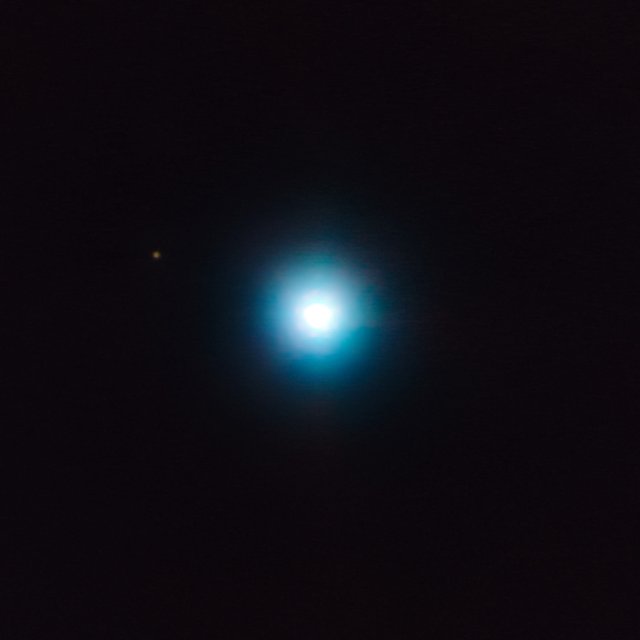Astronomers Snap Picture of Giant Exoplanet 1,200 Light-Years Away
An international team of astronomers has discovered a giant extrasolar planet orbiting a young star called CVSO 30. Not only have the scientists detected the planet, but they’ve also taken a direct image of it.

CVSO 30c is the small dot to the upper left of the frame. The large blob is the star CVSO 30 itself. Image credit: ESO.
CVSO 30, also known as 2MASS J05250755+0134243 and PTFO 8-8695, is a young T Tauri star of spectral type M3.
It is located in the constellation Orion, approximately 1,200 light-years from us, and is a member of a cluster of almost 200 low-mass stars collectively known as the 25 Orionis association.
A highly variable, fast rotating star, CVSO 30 has a mass of 0.39 solar masses and a temperature of about 5,800 degrees Fahrenheit (3,200 degrees Celsius).
CVSO 30 is also very young, with an estimated age between 2 and 3 million years, making it one of the youngest objects within the 25 Orionis group.
In 2012, astronomers with the Palomar Transit Factory survey found that the star hosted a so-called ‘hot-Jupiter’ exoplanet, CVSO 30b.
Now, a research team led by Dr. Tobias Schmidt of the Universities of Hamburg and Jena has imaged what is likely to be a second planet.
To produce the image, the team exploited the astrometry provided by NACO and SINFONI instruments on ESO’s Very Large Telescope.
CVSO 30b is 6 times the mass of Jupiter, while the newly-discovered planet, named CVSO 30c, has a mass between 4 and 5 Jupiter masses.
CVSO 30b orbits very close to the parent star, whirling around it in 10.76 hours at an orbital distance of 0.008 AU.
CVSO 30c orbits significantly further out, at a distance of 660 AU, taking 27,000 years to complete a single orbit.
The astronomers are still exploring how such an exotic planetary system came to form in such a short timeframe, it is possible that the two exoplanets interacted at some point in the past, scattering off one another and settling in their current extreme orbits.
“CVSO 30 is the first system, in which both a close-in and a wide planet candidate are found to have a common host star,” Dr. Schmidt and co-authors said.
“The orbits of the two possible planets could not be more different, having orbital periods of 10.76 hours and about 27,000 years.”
“Both orbits may have formed during a mutual catastrophic event of planet-planet scattering.”
The discovery was reported in the Sept. 26, 2016 issue of the journal Astronomy & Astrophysics (arXiv.org preprint).
____________________________________________________________________________________________
T.O.B. Schmidt et al. 2016. Direct Imaging discovery of a second planet candidate around the possibly transiting planet host CVSO 30. A&A 593, A75; doi: 10.1051/0004-6361/201526326